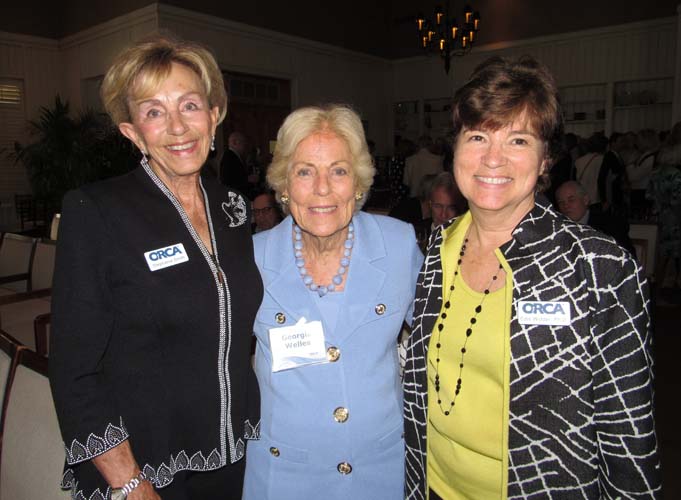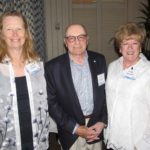
“We’re here tonight to celebrate the successful match of the $300,000 Schooner Foundation Grant,” said Bill Penney, Ocean Research & Conservation Association board vice chairman, welcoming a gathering of ORCA supporters, community partners and environmentalists to a reception last Monday evening at the Quail Valley River Club.
Introducing ORCA CEO Edith Widder, Ph.D., Penney said, “Edie founded ORCA in 2005 to help save the ocean she spent most of her life exploring. She has focused her passion for saving the ocean into determining what is needed to preserve and protect the ocean’s most precious real estate: its nurseries.”
Penney noted Widder’s many achievements and commendations, among them filming the very first video of a giant squid in the ocean; the seven newly-released postage stamps featuring her deep-sea creature images; the recent presentation of the Citation of Merit for Outstanding Exploration at the Explorer’s Club in New York; and receipt of the MacArthur Genius Award and corresponding $500,000 grant, all of which she used to develop ORCA Kilroy water quality monitors.
Information from the Kilroy monitors has enabled ORCA to produce pollution maps denoting the origins of problem areas as a way to address how best to fix those issues. In 2014 the state provided $2 million to purchase and install 25 Kilroys at all the major canals and tributaries feeding the Indian River Lagoon, a project completed in 2015.
Shortsightedly, once purchased, the state was no longer interested in their maintenance, and in 2017 cut funding by two-thirds, resulting in the removal of 15 monitors.
Vin Ryan of the Schooner Foundation stepped up to help with a loan of $300,000 and said the money would be gifted if the community matched it up to another $300,000.
“I was absolutely overwhelmed when we were able to match that $300,000 in four and a half months, thanks to many of the people in this room, including 100 percent of ORCA’s board,” said Widder, before inducting a number of individuals and organizations into a new ORCA Blue Lagoon Society for their consistently generous support.
“When Dave and I moved here in 1989, this was still being called the most biologically diverse estuary in the United States; it was just magnificent,” said Widder. “But the deterioration, especially over the last few years has been truly, truly alarming.”
She outlined critical threats to marine life and humans alike, from fish kills and the destruction of seagrass meadows caused by brown tides, to the Microcystin in the toxic blue-green algae that sent scores of people to the hospital and, over the long term, can cause liver cancer.
“The only way you’re going to protect water is to have some sort of an alert system,” said Widder. “We have to get smart about this, because what we’re talking about is our planetary life support system. And if we don’t sustain them, then they can’t sustain us.”
ORCA board chairman Wayne Mills had been a 25-year board member of the Chesapeake Bay Foundation, which worked with multiple municipalities to restore that previously polluted watershed; it is now roughly 50 percent recovered. Mills stressed the need to build a broad coalition of concerned organizations throughout Florida in order to capture the attention of the legislature and address the issues facing our own Indian River Lagoon and estuaries around the state.
For more information, visit teamorca.org.
Photos by: Mary Schenkel
Click HERE to see more or buy photos
- Stephanie Bennett-Smith, Georgia Wells and Edie Widder
- Edie Widder, Ken and Sheryl Dowd and Vin Ryan
- Richard Baker, Mary Chapman and Wayne Mills
- Bill Penney and Al Turner
- Bonnie Wilson and Suzanne Carter with Emilie and Bob Burr
- Linda and John Johnson with Nancy and Tom Going
- Kjestine Bijur, Barbara Hotchkiss and Peter Bijur
- Dhuanne Tansill and Peter Gilson
- Janet and Robert Hoffman (seated) with Edie Widder and Herb Fitz Gibbon
- William Berls, Mickey Cooney, Colin Bouley and Peter Post
- Carolyn and Jay Antenen
- Larry and Marge Collins with Karen Meyer
- Ken Gruden and Natalie Holtom with Ellie, Debbie and John Huryn
- Carla Meyer with Paul and Kathy Severino

















